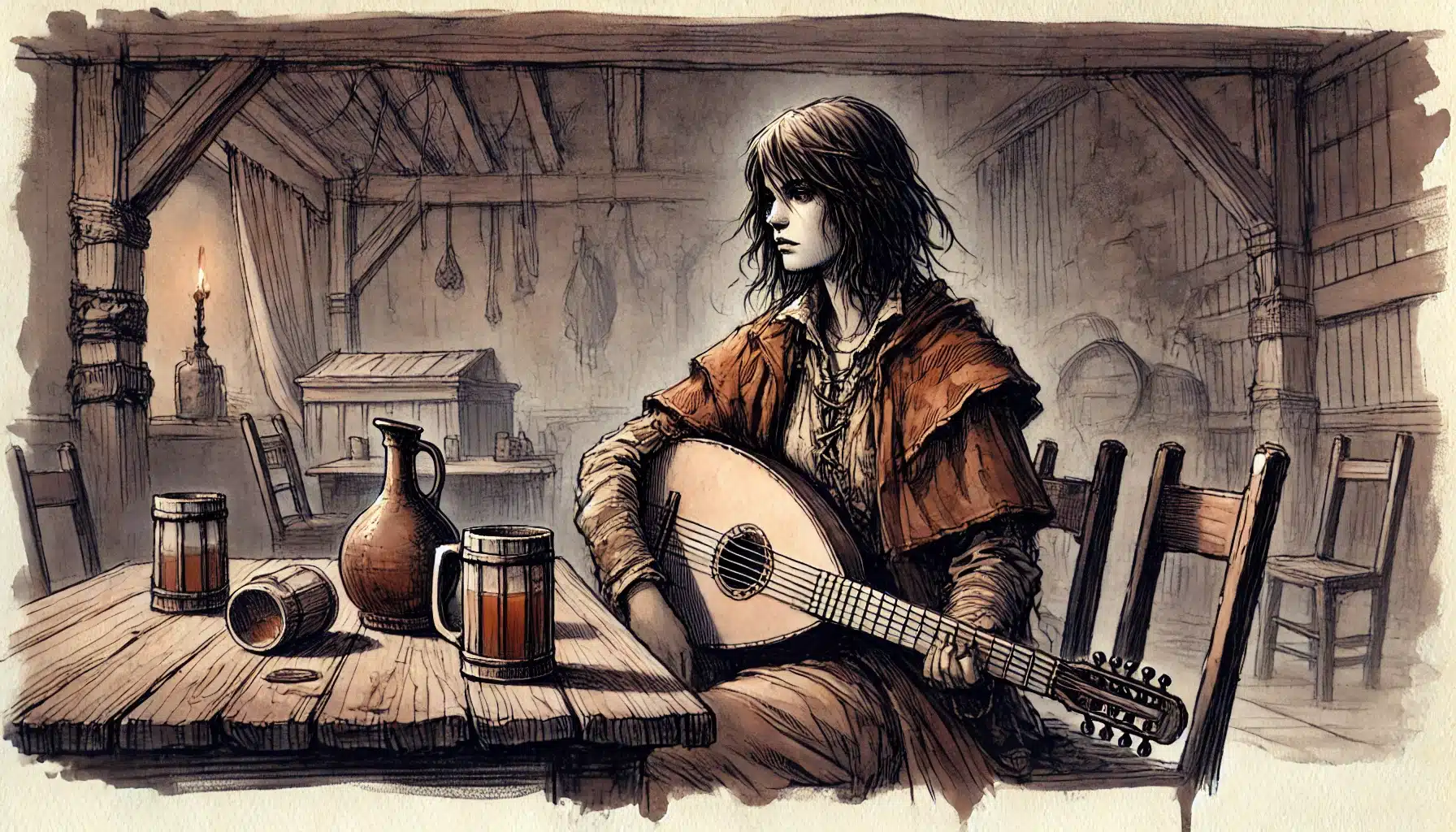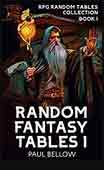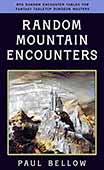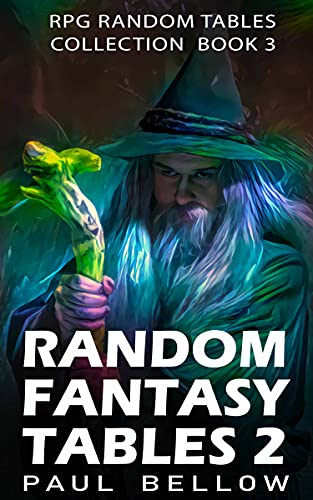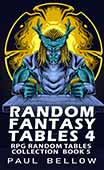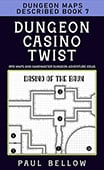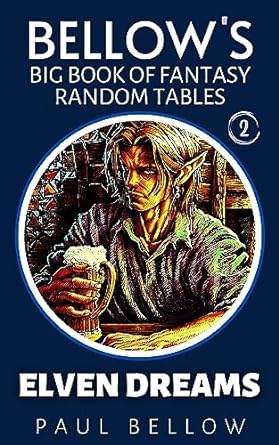Bards have always been the shapechangers of Dungeons and Dragons—masters of both magical arts and social nuance, slipping between musical spells and clever wordplay with a grin. Yet, for all their official versatility, there’s something almost irresistible about customizing bardic mechanics further, bending the rules to let creativity spill from the page into the dice-laden heart of your campaign. Homebrewing bards isn’t just about new tricks; it’s the ultimate way to channel each player’s singular voice, turning archetype into icon.
Why are bards such fertile ground for homebrew magic? Their core identity is all about personal flair—improvised performance, inventive magic, and the thrill of stealing the spotlight. Unlike classes with rigid martial codes or arcane traditions, the bard revels in genre-bending, weaving music and charisma into whatever form the story demands. It’s almost as if the rules themselves are quietly beckoning you to add your color to the song.
While the Player’s Handbook offers solid bones—a robust chassis of spellcasting, songful support, and a grab bag of skills—many players hunger for more. They seek colleges resonant with personal backstories, new spells that echo their character’s passions, and mechanics that make tablemates lean forward, curious. Homebrew isn’t a workaround; it’s the secret sauce for players who see their bard not just as a class, but as a living legend in progress.
The primary aim of homebrew bard rules is threefold: enrich the thematic tapestry, introduce mechanical variety, and inject new energy into every session. But every flourish must keep an ear on balance. Gamebreaking abilities or so-much-spotlighting that others fade to black can sap your table’s fun faster than a dragon breathes fire. The goal is delight, not dominance.
Above all, homebrewing is a collaborative jam session between DM and player. Open, honest discussion ensures custom content fits the campaign’s tone and the party’s dynamic. If everyone is crafting together—tuning each detail—homebrew bard rules become something much more than mechanics. They become the heartbeat of the adventure.
- Custom Bardic Colleges
- Expanding Bardic Inspiration
- Homebrew Bard Spells and Spellcasting Themes
- Homebrew Bard Performances and Roleplay Mechanics
- Magical Instruments and Unique Bard Gear
- Homebrewing Bard Multiclass Rules and Hybrids
- Customizing Bard for Different Campaign Settings
- Final Thoughts on Homebrewing Bards
Custom Bardic Colleges
Inventing new bardic colleges is perhaps the most dramatic way to reshape what it means to be a bard at your table. Each college is, at heart, a philosophy: a guiding ethos that informs not only spells and features but the style and function of your bard. The right college can invert expectations or hone a character’s role into something unforgettable.
Try my AI Tabletop RPG generators...and an extensive library of content!
New colleges lend flavor to every performance and spell, granting access to unique magic, tools, and bonuses. A college might open forbidden spell lists, offer wild combat support—think dazzling distractions, sonic shields, or healing refrains—or even change the face of performance itself. Suddenly, a song isn’t just a song: it’s a weapon, a secret, a fateful challenge to reality.
DMs looking to incorporate homebrew colleges should always tie features to rich narrative hooks. Is your College of Masks about ancient masquerade cults? Does the College of Echoes draw from haunted soundscapes or city noises? When college mechanics flow naturally from a bard’s story or the campaign’s lore, every new power feels earned and lived-in.
Above all, aim for synergy—let every homebrew college reinforce both the campaign world and the player’s imagined persona. Colleges should resonate on several levels, from table mechanics to in-world storytelling, embedding the character deeper into the adventure’s tapestry.
Homebrew Bardic College Ideas:
- College of Echoes: Manipulate ambient or environmental sounds for magic and subterfuge.
- College of Masks: Master illusion, disguise, and the swift tongue of deception.
- College of the Archive: Harness ancient knowledge with songs that recall lost lore and histories.
- College of Discord: Shape wild magic from clashing harmonies—think spell surges or unpredictable results.
- College of the Hunt: Channel primal rhythms to track, trap, or sway beasts.
- College of Lanterns: Inspire and heal through light-shifting performances reminiscent of magical lantern shows.
- College of Blood: Blend performance with ritual—sapping strength or bolstering allies through sacrificial song.
- College of Monoliths: Use percussive power and rhythmic chants to manipulate earth and stone.
- College of Storms: Command the tempest—incite thunder, wind, and lightning through music.
- College of Marionettes: Animate objects, bend the will of crowds, or control the battlefield like a puppeteer.
- College of Stars: Draw cosmic inspiration to cast fate-altering spells tied to constellations.
- College of Dusk: Spin songs of shadow; blend invisibility, fear, and the magic of twilight.
- College of Revels: Turn celebration into advantage, converting crowd energy and chaos into buffs.
- College of Inks: Weave magical calligraphy and illuminated scripts, making written spells as potent as spoken ones.
No homebrew subclass is complete, though, without careful review. Scrutinize every new feature for potential pitfalls, especially those that stack with official abilities or overshadow core party roles. Encourage playtesting and open feedback at the table—even the coolest subclass can upend a campaign if not finely tuned.
⚔️ Fantasy RPG Random Tables Books
Make life as a Gamemaster easier…
If you play Dungeons & Dragons, Pathfinder, or other fantasy RPGs, this
RPG random tables series
is packed with encounters, NPCs, treasure, and more. Available in eBook or print—either way, you’ll have a wealth of adventure ideas at your fingertips.
Remember: the best colleges have a clear flavor identity and purposeful, interconnected features. If your College of Lanterns grants too-broad light manipulation or the College of Discord turns every fight into chaos, dial back, refocus, and ensure each ability enhances, rather than warps, the bard’s journey.
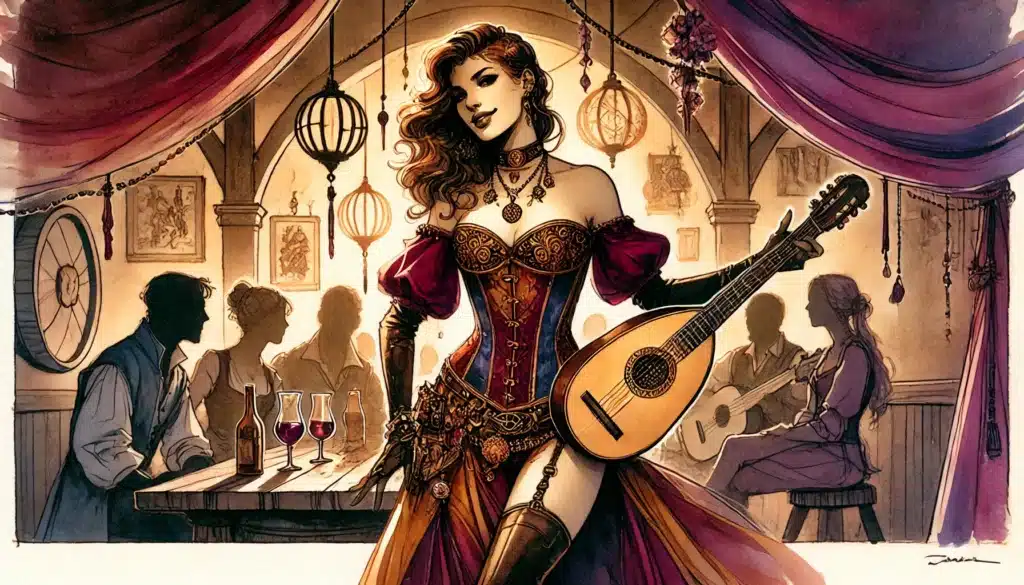
Expanding Bardic Inspiration
Bardic Inspiration is the thread that ties the bard to their party—a pulse of encouragement, a flash of brilliance, a well-timed joke that turns a rout into a rally. Yet, official rules for this mechanic are surprisingly conservative. Homebrewing new forms and uses can radically expand what it means to inspire.
Consider archetypes beyond the classic wandering minstrel. What if inspiration comes through dance, intricate storytelling, or paint-splattered murals instead of music? Each artform can inspire unique mechanics: a performance-based turn that pulls allies in for a group buff, a quick poem that rerolls a dire save, or a painting that traps the dreams of foes.
Alternate dice and expanded use cases also give Bardic Inspiration fresh life. Perhaps different dice shapes represent the intensity or risk of various performances, or bards can burn their inspiration to power dramatic narrative moments—scene control, battlefield reversals, or reality-bending descriptions.
Just as important, tie inspiration styles directly to bard personality and campaign tone. A horror game’s bard might offer chilling resolve with a whispered hymn; a whimsical fey bard might invoke bursts of luck via pranks or riddles. Homebrew, in this case, means deepening the role and impact of inspiration at the table.
Alternative Bardic Inspiration Uses & Variants:
- Reroll one failed saving throw.
- Grant temporary hit points equal to the inspiration die roll.
- Temporarily gain proficiency in a chosen skill or tool.
- Activate a narrative “dramatic entrance” or cinematic slow motion.
- Allow an extra reaction during a round.
- Cancel disadvantage on a critical check or attack.
- Enhance spell DC or attack roll for one spell cast.
- Perform a flashback to gain crucial forgotten info.
- Counter a single magical effect targeting the recipient.
- Enable movement without provoking opportunity attacks for a round.
- Bestow advantage on one initiative roll.
- Convert inspiration into a magical shield, reducing incoming damage.
- Temporarily “copy” an ally’s class feature for a single round.
With all these dazzling options, don’t let power creep sneak up on you. Balance is best kept with restricted frequency—maybe a bard can only fuel one “cinematic” scene per rest, or choose between advanced inspiration effects at higher levels.
DMs should also review how these changes interact with other support classes. The bard’s spotlight brightens everyone, but a dazzling glare can dull the rest of the party. Keep collaborative play at the core, letting each class shine—and your expanded Bardic Inspiration will, well, inspire.
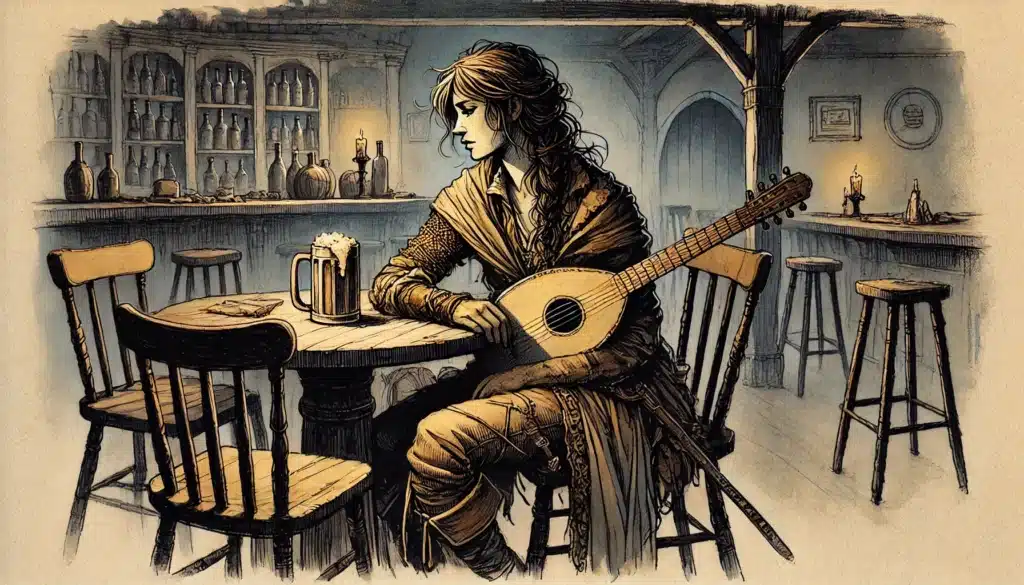
Homebrew Bard Spells and Spellcasting Themes
Spells are the palette of any bard, and homebrewing new magical options is an easy way to tailor each bard to their unique artistic muse. Is your bard a pyrotechnic prodigy? Their spells might evoke bursts of color and fire. Or perhaps an elegiac painter—casting spells that etch illusions onto physical canvases. Homebrew spell lists demand care, but can turn a character concept from fun to unforgettable in a single session.
Start by letting the bard’s artistry dictate spell flavor and mechanics. A bard attuned to the elements might have stormy battle hymns or earthy odes; a trickster-bard could specialize in concealment, distortion, or fleeting boons. Consider spells that alter the environment, inflict unusual status effects, or heal with emotional resonance.
When designing custom spells, anchor them firmly in balance: duration, range, damage, and versatility. Avoid spells that simply “do more” than canon options; instead, aim for effects with creative tradeoffs or limits. Let artistic forms—sculpture, dance, light shows—inspire both how the spell looks and how it functions.
Collaborate closely with DMs and players to ensure new spells mesh with campaign arc and party power level. Always clarify intent and boundaries; a spell with narrative panache but unclear impact can bog down play or, worse, feel like narrative favoritism.
⚔️ Fantasy RPG Random Tables Books
Make life as a Gamemaster easier…
If you play Dungeons & Dragons, Pathfinder, or other fantasy RPGs, this
RPG random tables series
is packed with encounters, NPCs, treasure, and more. Available in eBook or print—either way, you’ll have a wealth of adventure ideas at your fingertips.
| Spell Name | Effect Summary | Artistic Theme | Suggested Level |
|---|---|---|---|
| Phantasmal Parade | Creates vibrant illusory creatures to distract | Parades/Dance | 2 |
| Choir of Stars | Heals or buffs allies with celestial hymns | Choral Singing | 4 |
| Painter’s Escape | Leap through an illusory painted landscape | Painting/Illusion | 3 |
| Searing Spotlight | Blinding light exposes foes, grants advantage | Stagecraft/Lighting | 1 |
| Rhapsody of Roots | Entangle enemies with sound-shaped roots | Nature/Folk Song | 2 |
| Echo’s Embrace | Store and replay a recent sound or effect | Ambient Audio | 1 |
| Harmonize Spirit | Boosts morale; immunizes against fear/charm | Meditation/Chanting | 3 |
| Claymask Gaze | Temporarily alters targets’ faces or voices | Mask Theatre | 2 |
| Lantern Waltz | Moves magical lights to reveal secrets/traps | Lantern Dance | 1 |
| Discordant Riff | Enemy must reroll attack; risk wild magic surge | Musical Debate | 4 |
Thematic spells deepen a bard’s personality, connecting each magical act to their envisioned artistry. Choosing or inventing spells as a group creates a sense of ownership and pride—every spell becomes a part of the character’s legacy.
DMs should encourage player involvement in homebrew spell creation, granting space for inventive ideas while enforcing clear limitations. A truly memorable bard spell is effective, flavorful, and always leaves the party wanting an encore.
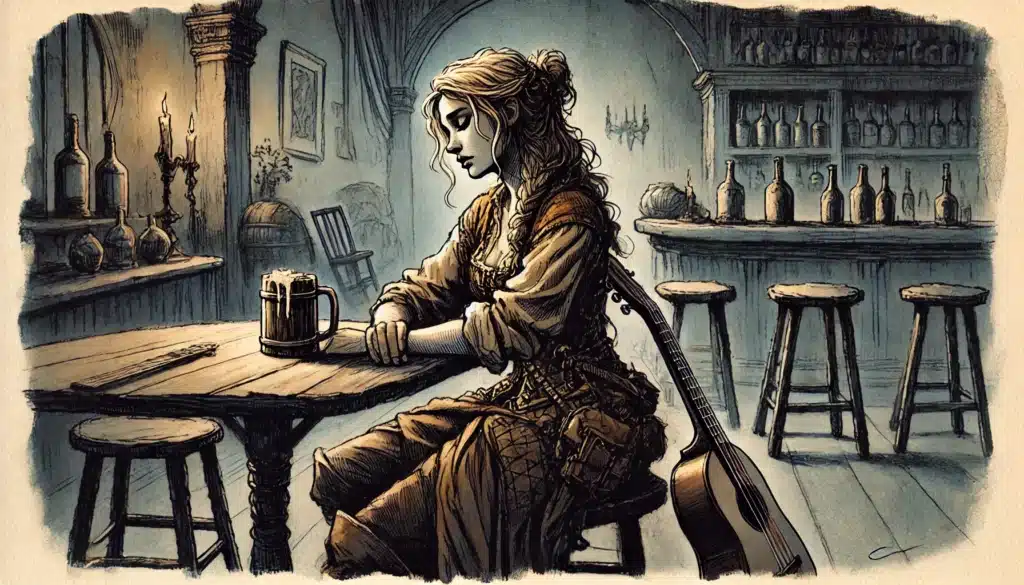
Homebrew Bard Performances and Roleplay Mechanics
Performance sits at the very heart of bardic charm, yet it’s often reduced to simple Charisma checks or quick in-game descriptions. Why not homebrew more robust, interactive performance mechanics? With a little imagination, performances can influence social encounters, sway the battlefield, or even alter the course of the campaign itself.
Consider granting mechanical bonuses based on the style and success of a bard’s in-character performance. Perhaps a stirring speech gives the party advantage on persuasion, or a flawlessly executed sonata inspires mass healing. Instruments and performance props can provide magical effects tied to their history or construction, blurring the line between art and adventuring tool.
Tie performance effects to narrative milestones. Maybe recurring performances unlock new abilities, or a bard who “brings down the house” in a major city gains renown, opening doors in future sessions. Homebrewed performances should complement—not supplant—roleplay, rewarding creativity, collaboration, and bold ideas.
Above all, let performances impact the world tangibly. When a bard’s composition topples a villainous regime or unites divided folk, the story belongs to everyone at the table, shaped by the bard’s ingenuity and the DM’s generosity.
Homebrew Bard Performance Ideas:
- Playing a violin solo calms nearby beasts or magical monsters.
- Staging a play with party participation casts Mass Suggestion.
- A shadow puppet show reveals a secret history or prophecy.
- Declaiming an epic poem soothes cultural wounds and earns favors.
- Dazzling dance grants allies extra movement or AC on their turn.
- A battle drum rally inspires advantage on all saving throws for a round.
- Reciting a satirical limerick disarms or distracts a foe in combat.
- Painting a mural during downtime grants the party a group luck reroll later.
- Telling a bedtime story empowers an ally’s next rest for bonus healing.
- A thunderous horn blast frightens or scatters minor enemies.
- A magical flute guides the party safely through hazardous terrain.
- A duet with an NPC unlocks secret faction knowledge.
- Rhythmic stomping creates tremors, triggering traps or hazards at a distance.
- Chanting an elegy weakens undead within earshot.
- Juggling enchanted torches uncovers illusions or invisible foes.
- Writing and performing a diss track grants advantage against a public rival.
- Spinning a fortune wheel for a crowd triggers a beneficial random event.
When DMs highlight bardic performance, non-combat scenes gain new gravity and magic. Players are emboldened to experiment, express, and inhabit their characters fully, knowing their efforts resonate in the campaign world.
Reward inventive performances with in-story reward—new allies, unlockable magic, or unique lore. In a game of imagination, the bard is often the spark that sets the tapestry alight.
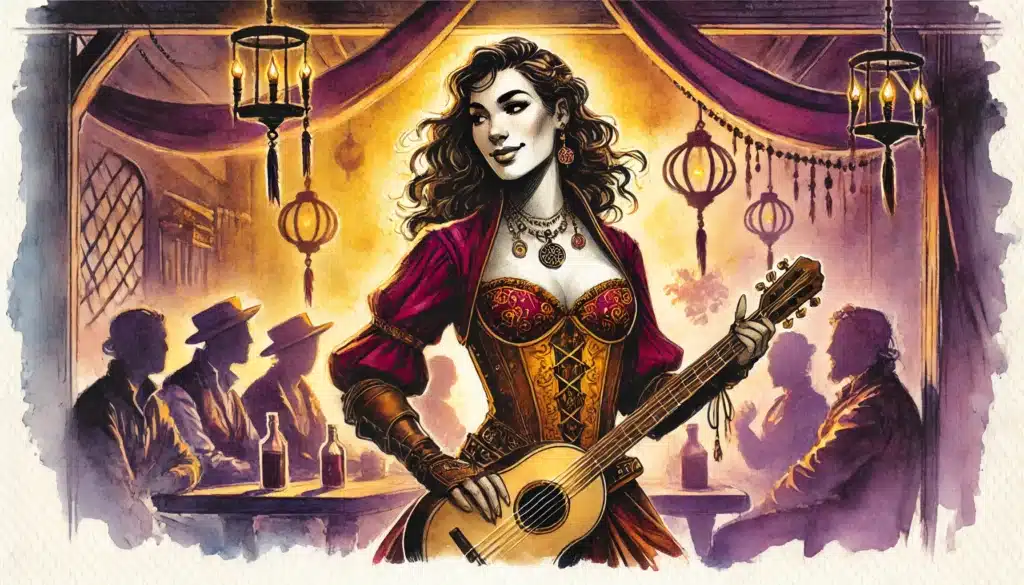
Magical Instruments and Unique Bard Gear
Signature gear can define a bard more than any spell. From enchanted mandolins that conjure illusions to performance attire that dazzles nobles, homebrewed magical items expand both flavor and function. For bards, gear isn’t just equipment—it’s an extension of identity and artistry.
Start by homebrewing magical instruments with distinct personalities. A cello that stores spells for later, a flute that bends the wind, a drum that can only be heard by the pure of heart—these artifacts invite creative play and unique problem-solving. Performance-specific armor and clothing can offer buffs or protection tied to audience reactions, setting or mood.
Magical bard gear should reflect character growth and campaign milestones. Perhaps a bard earns a “Maestro’s Baton” after orchestrating their first great success, unlocking new magic as their legend grows. Or a once-inert relic comes to life when played amidst dragonfire or celestial storm.
Always consider limitations—charges, required rest, or performance-specific triggers keep magical gear from dominating play. Unique usage requirements tie power to roleplay, sustaining the magic of discovery over time.
| Item Name | Magical Effect | Usage Limitation |
|---|---|---|
| Virtuoso’s Lute | Stores one spell to be played later | 1/day, spell slot required |
| Thunderstep Boots | Create a thunderclap on stage—stuns foes | 3/day, must perform dance |
| Silver Tongue Ring | Grants advantage on Persuasion | 1/short rest |
| War-Drum Gauntlets | Adds extra damage to allies’ attacks | 2/day, performance check |
| Earring of Eloquence | Casts Comprehend Languages on self | Once per long rest |
| Shadowmask Cloak | Grants invisibility during acts | 1/min per day, performance |
| Laureate’s Laurel | Auto-passes one Charisma check | 1/week, must risk embarrassment |
| Wandering Minstrel Hat | Resummons a lost instrument | Once per week |
| Nightingale Violin | Plays music only animals/monsters can hear | 10 min/session |
| Starlit Sash | Adds moonlight to performances; minor healing | 2/day, uses inspiration |
Balance each item’s potency with playtesting, letting the table gauge whether a new relic quickens the pace or warps the spotlight. Most importantly, tie item power to story progress—each powerful instrument or costume should be earned through skill, luck, or legend.
Magical gear, after all, should be more than a stat boost; it’s a narrative trophy and an invitation to ever-greater feats.
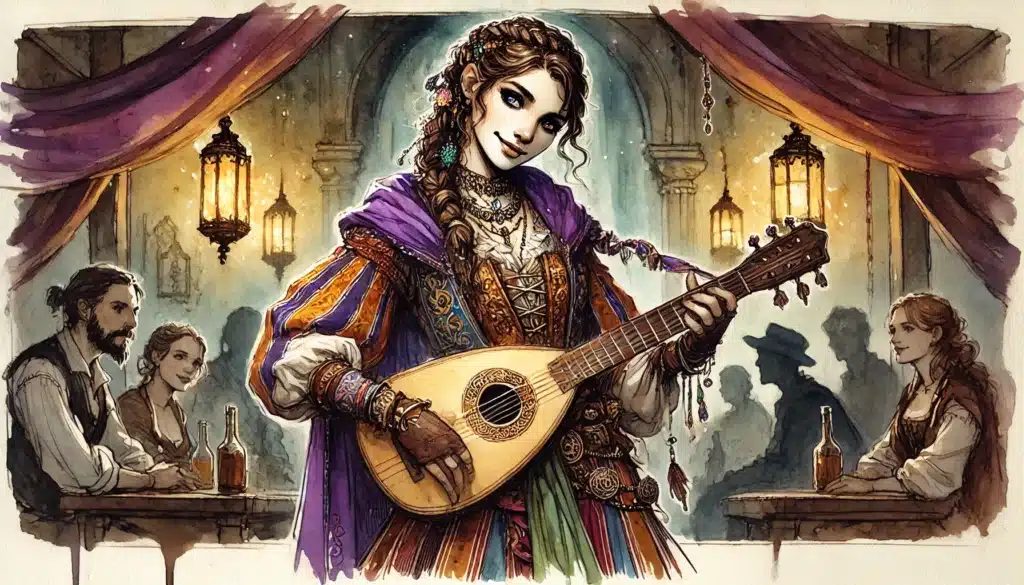
Homebrewing Bard Multiclass Rules and Hybrids
For some, bardic flair alone is too confining. The drive to unite classes in new, flavorful hybrids inspires some of the most memorable adventurers—and truly wild homebrew possibilities. Yet, multiclassing must dance a careful step: enhance theme and character story without plunging balance into discord.
Flavor-first combinations pay tribute to character backstory: a bard raised in a thieves’ circus might multiclass rogue for sleight of hand and acrobatics; a bardic scholar dips wizard for ancient magical secrets. The magic emerges when hybrid features are more than the sum of their parts—a monkish bard using martial rhythm or a druidic bard whose birdsong literally calls the wild.
Try my AI Tabletop RPG generators...and an extensive library of content!
Respect the spirit of both classes. Homebrew hybrids shine brightest when they offer new perspectives—not just bonus stacking or “class-dipping” for power. Each feature should reflect the character’s journey, with subclass abilities woven carefully between traditions.
Homebrew Bard Multiclass Archetypes:
- Bard/Monk: Performance-based martial artist.
- Bard/Druid: Sings in harmony with beast and bloom.
- Bard/Artificer: Invents musical gadgets and enchanted props.
- Bard/Warlock: Inspires through forbidden lore and fey pacts.
- Bard/Blood Hunter: Weaves magic and sacrifice in battlefield ballads.
- Bard/Fighter: Battle-chansonnier, calling marshaled rhythms.
- Bard/Paladin: Oath-bound herald, swearing by music and virtue.
- Bard/Sorcerer: Sculpts spells raw from inner chaos.
- Bard/Cleric: Serves as the liturgist-poet of a faith or cult.
- Bard/Rogue: Master of wit, diversion, and urban legend.
- Bard/Ranger: Wandering balladeer shepherding wild secrets.
- Bard/Wizard: Scholarly singer who unlocks forbidden cantrips.
- Bard/Barbarian: Rages through pounding drumbeats.
- Bard/Psion: Mental performance synchronizing minds.
Two things separate opulent hybrids from party-breaking monsters: mechanical discipline and narrative cohesion. Don’t simply pile features—design hybrid subclass abilities with clear, flavorful synergy. Perhaps a Bard/Monk manifests ki through percussive rhythm, or a Bard/Artificer’s gadgets amplify performance spells.
Test, adjust, and above all, keep the table’s fun at center stage. A bard hybrid should be a revelation, not a rules headache.
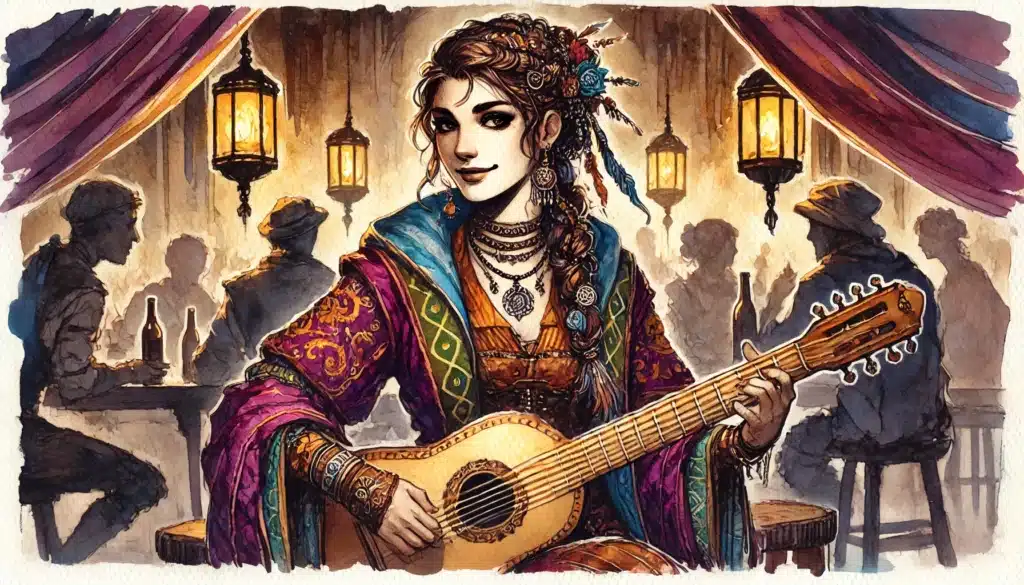
Customizing Bard for Different Campaign Settings
Not every campaign is sword-and-lute. Bards deserve homebrew adaptation for every genre—from the synth-splashed streets of cyberpunk to the spectral corridors of gothic horror. Each setting invites bards to transcend their medieval trappings, forging instruments and performances that crackle with setting-appropriate energy.
Swap the lyre for laser harps or data beats in a futuristic campaign; in an ancient mythic setting, performance might mean jugglers’ torches or mythic choirs. DMs and players should together craft archetypes that fuel stories native to their world: evoke haunted sonatas in horror, pirate chanteys on the high seas, or cosmic invocations from the stars in sci-fi or planar tales.
Homebrewing bard variants for unique settings isn’t just surface detail—it invites fresh spell ideas, performance mechanics, and roleplay angles. Imagine a bard wielding a haunted gramophone or wielding sand-chime melodies to command the desert wind. Changing instruments and power sources transforms how the party interacts with the world and each other.
Always infuse lore into every homebrew: why do Celestial Bards know starlit hymns? Who taught the Desert Bard to tune their voice to the wind? When flavor and mechanics intertwine, players are swept into settings that live beyond the rules.
Setting-Specific Bard Variants:
- Cyberpunk Bard: Neural beat caster with digital synths and VR lightshows.
- Gothic Bard: Prophet whose voice communes with ghosts and shadows.
- Desert Bard: Mystic who plays wind-chimes and knows sand’s secret tongues.
- Celestial Bard: Hymnist channeling the essence of sun, moon, and stars.
- Pirate Bard: Sea shanty specialist, commands watery spirits, stirs mutinies.
- Feywild Bard: Trickster who performs with living flora and ephemeral song.
- Steampunk Bard: Inventor of clockwork music boxes and mechanical choirs.
- Urban Sprawl Bard: Slam poet, street performer, influencer with crowd magic.
- Ancient Oracle Bard: Uses ritual masks and forbidden texts in performance.
- Horror Bard: Sings hymns that calm fear and banish or attract the undead.
- Gladiator Bard: Arena hype master, stirs crowds to empower combatants.
- Nomad Bard: Uses throat singing and instruments made from found objects.
- Arcane Punk Bard: Screams spells through distortion pedals and metallic amps.
- Space Bard: Zero-g dancer, composes transmissions with cosmic resonance.
- Jungle Totemist Bard: Blends animal mimicry and primal drumming for magic.
Homebrew bards for any campaign should blend seamlessly with the world’s lore, reinforcing the internal logic and history of the setting. Instruments, spell effects, and performance rituals should feel like natural outgrowths of the world, deepening immersion and narrative possibility.
The right setting-specific bard variant can become central to worldbuilding—anchoring traditions, secret histories, and even epic conflicts to a single, memorable performer.
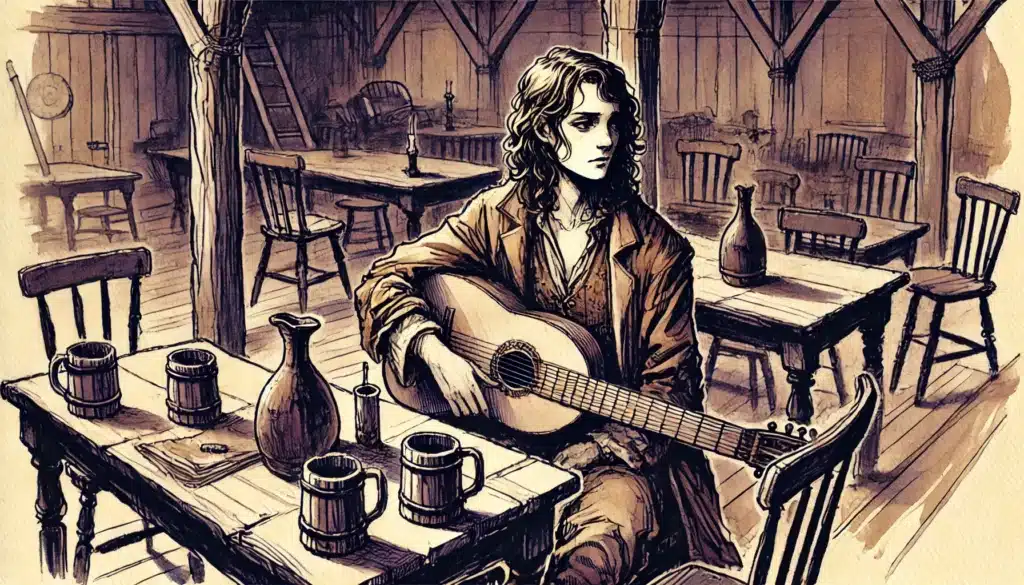
Final Thoughts on Homebrewing Bards
Homebrewing bard rules is nothing short of an invitation to let imagination shape reality. Out of all the classes in Dungeons and Dragons, the bard is perhaps best suited for this kind of game—where every rule tweak is a note in an ever-expanding symphony, and every session brings new opportunities for artistry and surprise.
⚔️ Fantasy RPG Random Tables Books
Make life as a Gamemaster easier…
If you play Dungeons & Dragons, Pathfinder, or other fantasy RPGs, this
RPG random tables series
is packed with encounters, NPCs, treasure, and more. Available in eBook or print—either way, you’ll have a wealth of adventure ideas at your fingertips.
The creative potential is vast: from spell-studded pop stars to shadowy master mimics, homebrewed bards allow players to dive headlong into worlds that fit their dreams—not just the templates provided. Personalization fuels engagement, and dramatic flair draws everyone, DM included, into richer, more vibrant storytelling.
But beware the siren’s call of unchecked power or spotlight theft. Balance isn’t about flattening fun, but about ensuring every player at the table sings their part. The joy of homebrew lies not in outshining, but in uplifting, inspiring, and collaborating—finding mechanical and narrative sweet spots through focused testing and honest feedback.
Approach bard customization as a group exercise: test every homebrew feature, story beat, and item with the whole table’s enjoyment in mind. When something wobbles, adjust; when inspiration strikes, ride the wave, together. A good bard never solos for long.
Above all, the homebrew journey is about shared fun, shared story, and shared creativity. Whether you’re the DM orchestrating the party’s adventures or the player spinning ballads and legends, never lose sight of the golden rule: the best bard is the one whose performance echoes—loud, proud, and unique—through every heart at the table.

